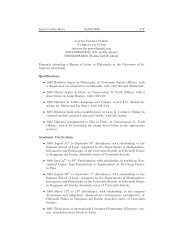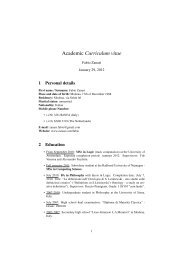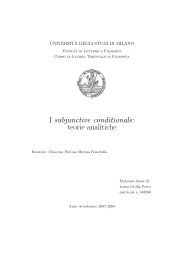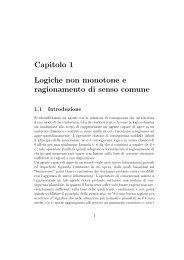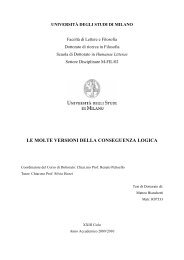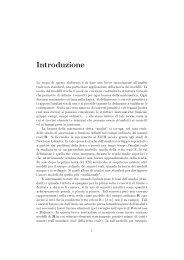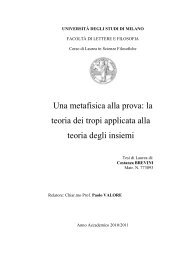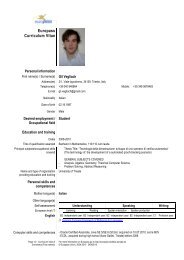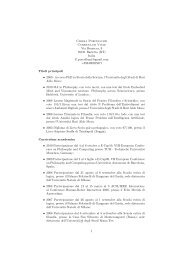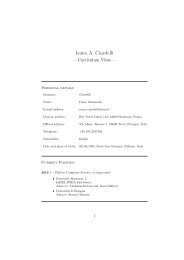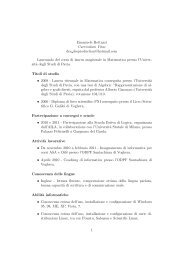Ω-Theory: Mathematics with Infinite and Infinitesimal Numbers - SELP
Ω-Theory: Mathematics with Infinite and Infinitesimal Numbers - SELP
Ω-Theory: Mathematics with Infinite and Infinitesimal Numbers - SELP
You also want an ePaper? Increase the reach of your titles
YUMPU automatically turns print PDFs into web optimized ePapers that Google loves.
INTRODUCTION<br />
not. We will write A ⊂ B if A is a subset of B <strong>and</strong> we don’t admit the possibility<br />
that A = B, or we already know that A = B.<br />
If A <strong>and</strong> B are sets, we will denote by A × B the cartesian product of A <strong>and</strong> B.<br />
For a matter of commodity, if A is a set <strong>and</strong> n ∈ N, in the last chapter of this paper<br />
we will sometimes denote by An the cartesian product A<br />
<br />
× .<br />
<br />
. . × A<br />
<br />
.<br />
n times<br />
We will denote by | · | the cardinality of a set.<br />
If A is a set, we will denote by P(A) its powerset. Moreover, we define once <strong>and</strong><br />
for all the set Pfin(A) = {λ ⊆ A : 0 < |λ| < +∞}. Clearly, Pfin(A) ⊂ P(A), <strong>and</strong><br />
the two differ only for the empty set if <strong>and</strong> only if |A| is finite.<br />
If A ⊆ Ω, by Ac we will denote the set Ω \ A. We will use the same notation<br />
even in other cases, but it will always be clear what is the set B that has the same<br />
role Ω had in the previous case.<br />
For all sets A <strong>and</strong> B, for all b ∈ B we will denote (<strong>with</strong> abuse of notation) by cb<br />
the function cb : A → B defined by cb(a) = b for all a ∈ A. We will denote by χA<br />
the function χA : A → {0, 1} defined by<br />
<br />
1 if x ∈ A<br />
χA(x) =<br />
0 if x ∈ A<br />
<strong>and</strong> we will call it the characteristic function of A.<br />
We will denote by N, Z, Q <strong>and</strong> R the sets of, respectively, natural numbers,<br />
integer numbers, rational numbers <strong>and</strong> real numbers. For a matter of commodity,<br />
we will agree that N = {1, 2, 3, . . .}, so that 0 ∈ N.<br />
If F is an ordered field <strong>and</strong> a, b ∈ F, we will write [a, b)F = {x ∈ F : a ≤ x < b}.<br />
We will use the notations [a, b]F, (a, b)F <strong>and</strong> (a, b]F accordingly. When there will be<br />
littke risk of misunderst<strong>and</strong>ing, we will omit the indication of the field F. If x ∈ F,<br />
we will denote by |x| its absolute value:<br />
<br />
x if x ≥ 0<br />
|x| =<br />
−x if x < 0<br />
x




